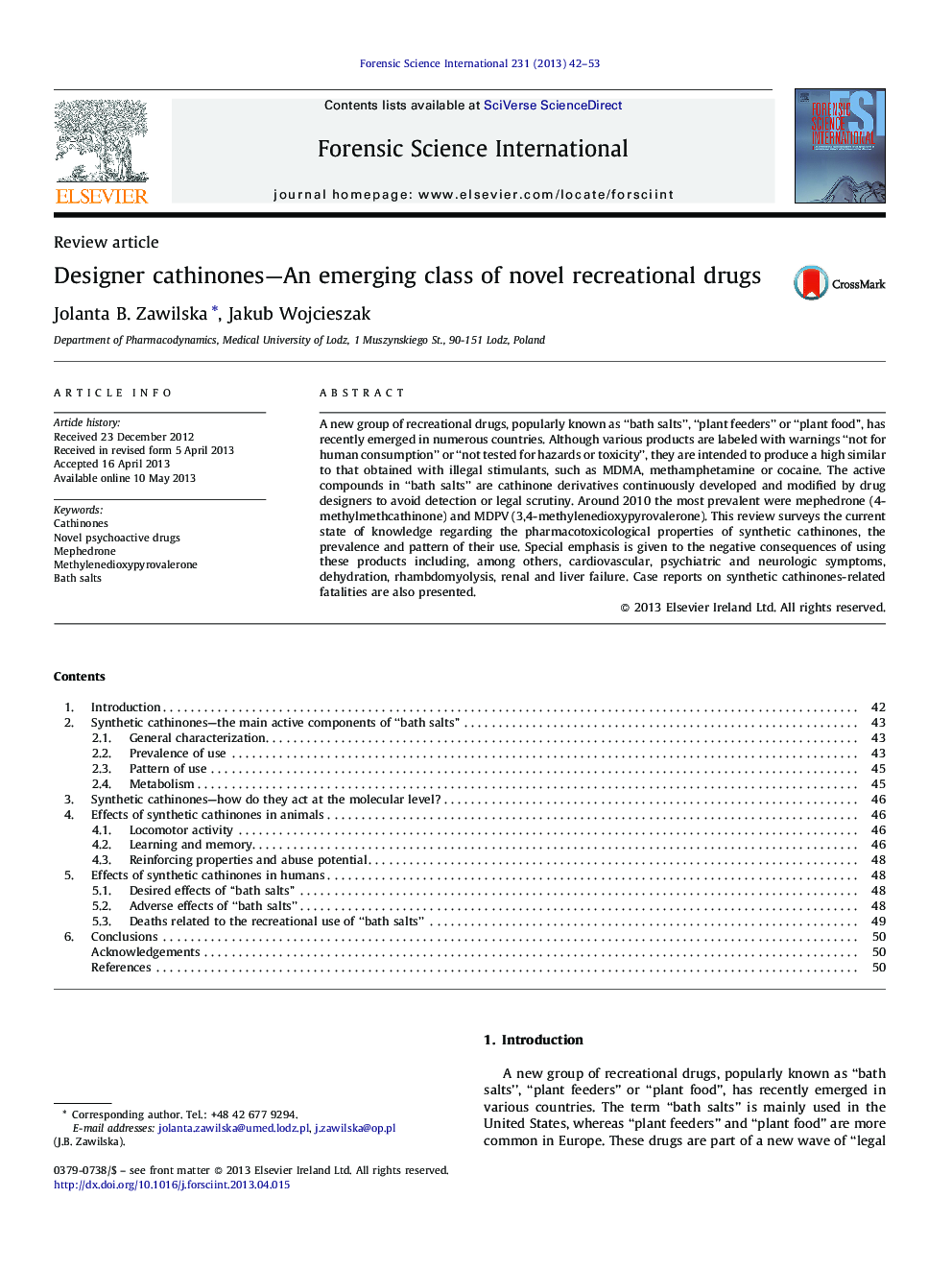| Article ID | Journal | Published Year | Pages | File Type |
|---|---|---|---|---|
| 95806 | Forensic Science International | 2013 | 12 Pages |
A new group of recreational drugs, popularly known as “bath salts”, “plant feeders” or “plant food”, has recently emerged in numerous countries. Although various products are labeled with warnings “not for human consumption” or “not tested for hazards or toxicity”, they are intended to produce a high similar to that obtained with illegal stimulants, such as MDMA, methamphetamine or cocaine. The active compounds in “bath salts” are cathinone derivatives continuously developed and modified by drug designers to avoid detection or legal scrutiny. Around 2010 the most prevalent were mephedrone (4-methylmethcathinone) and MDPV (3,4-methylenedioxypyrovalerone). This review surveys the current state of knowledge regarding the pharmacotoxicological properties of synthetic cathinones, the prevalence and pattern of their use. Special emphasis is given to the negative consequences of using these products including, among others, cardiovascular, psychiatric and neurologic symptoms, dehydration, rhambdomyolysis, renal and liver failure. Case reports on synthetic cathinones-related fatalities are also presented.
